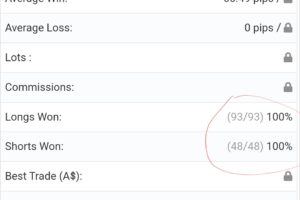
Technical Analysis
In contrast to a fundamental trader who looks to news and myriad supply/demand data as trading inputs, a technical trader gets information directly from the market itself by looking at one picture—a price chart. And, technicians operate on the assumption that past price movement can predict the future direction of prices.
Technicians believe that history tends to repeat itself. Thus, technical buying and selling often creates a self-fulfilling prophecy. So, whether you are a technical trader or not you must be aware of the power and influence of technicians when trading or investing in the futures markets. Technicians create opportunities.
Technical analysis is an art not a science. Consider two people looking at the same painting. Each may see or interpret the painting as having two very different meanings or messages. In the case of charts, you can think of the market as the artist and each technician as a critic. Unlike fundamentalists who pick and choose the inputs and data that they deem as critical, all technicians look at the same picture, the same snapshot, the same chart at all times.
Technicians rely on three basic types of charts:
- Line chart
- Bar chart
- Candlestick chart
Line Chart
The line chart plots market closing prices. This chart provides an excellent picture of long-term trends. However, the trading range during a time period is often important information for a technical analyst, so line charts are rarely used for in-depth technical analysis.
Bar Chart
Bar charts expand on the line chart by adding other pieces of key information, including the open, high and low prices traded during a period, which can be defined in minutes, days, weeks, months or years. The horizontal dash on the vertical line represents the opening price (on the left) and closing price (on the right) of the period. On most bar charts, if the left dash is lower than the right dash, the bar will be shaded green representing an up period.
Candlestick Chart
Candlestick charts take the same information as a bar chart—open, high, low, close—and represent it an easy view. The wide vertical lines—candles—show the difference between the opening price and the closing price. Red candles indicate periods in which the close was below the open. Green candles indicate the market closed higher than its opening print during that period.
Technical Studies and Chart Patterns
Like a drill bit with different heads and attachments, technical traders often add studies that examine the internal workings of the market, e.g., volume or momentum, on top of a price chart. These studies are thought to indicate certain repeating patterns that occur.
Charts themselves are extremely objective—the open, high, low and close are definitive. Subjectivity comes into play when you begin analyzing a chart pattern. Chart patterns can create self-fulfilling prophecies in markets because many people follow them. Therefore, it is useful to know which way the herd is headed in a stampede to reduce your chance of getting run over!
Candlestick charts represent an easy view of a periods trading range and contain information similar to that in the bar chart. The wide vertical lines, or candles, illustrate the difference between the opening price and the closing price. The red candles indicate periods in which the price of Eurodollar futures went down and the yellow candles indicate periods in which the price climbed.
Chart pattern surfing
A chart pattern is more than arbitrary lines connecting points on a graph. Indeed, something significant happens when the lines form a trend. Technical traders who hop on a trend play a game of follow-the-leader, often to an unknown destination or price target. Who the leader is or why they are leading the price up or down is not important. What technicians know from experience is to not get in the way of a trend but to go along with it. Thus the saying “the trend is your friend.”
However, a trend typically does not go in a straight line. In fact, it can be a bumpy ride. To get a feel for the ups and downs within a trend, consider this example:
Let’s say that you win the lottery. If you were to plot your emotions on a chart, it would look like a bull market. Your emotions are happy, even ecstatic. Now, on the way to the lottery office to collect your winnings someone rear-ends your car. The emotion chart will probably show a bit of a pullback, a dip from your previous level of happiness. However, it is unlikely that you will become unhappy because of your overall good fortune. Notwithstanding your crumpled rear bumper, your happiness returns. The only thing that could turn this mood chart pattern in the opposite direction is a negative material change to your personal circumstances—like losing your winning lottery ticket before you cash it in.
Speed bumps
Even the most powerful trending markets take a bit of a detour now and again. Here’s some of the reasons why:
- Profit taking. Different traders have different risk/reward profiles, so take profits at different prices.
- Changes in other markets or overall economic conditions. Other, unrelated markets can influence buying or selling in a trending market, e.g. the price of crude oil could influence trading in the corn market.
- News. Day-to-day news items can influence buying or selling that goes against the trend.



